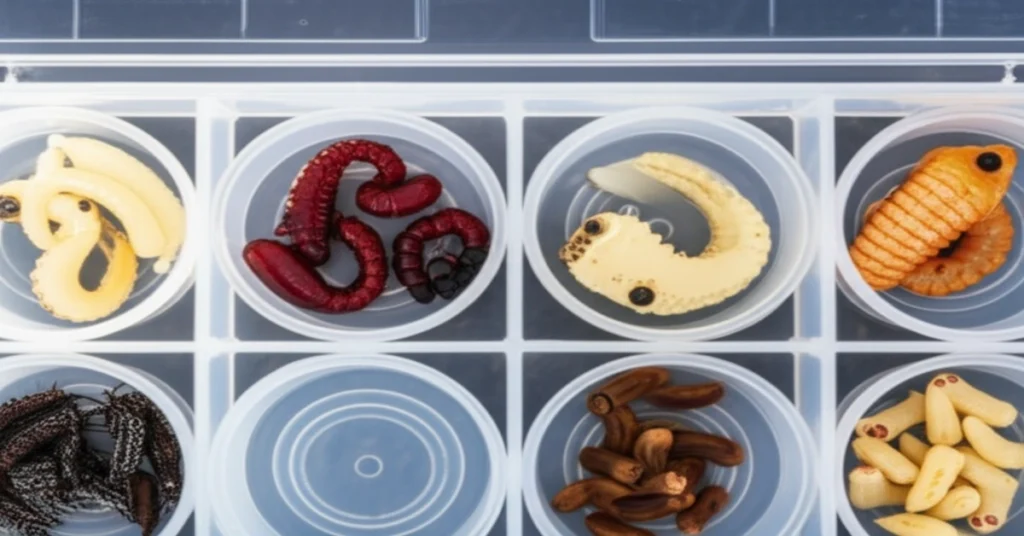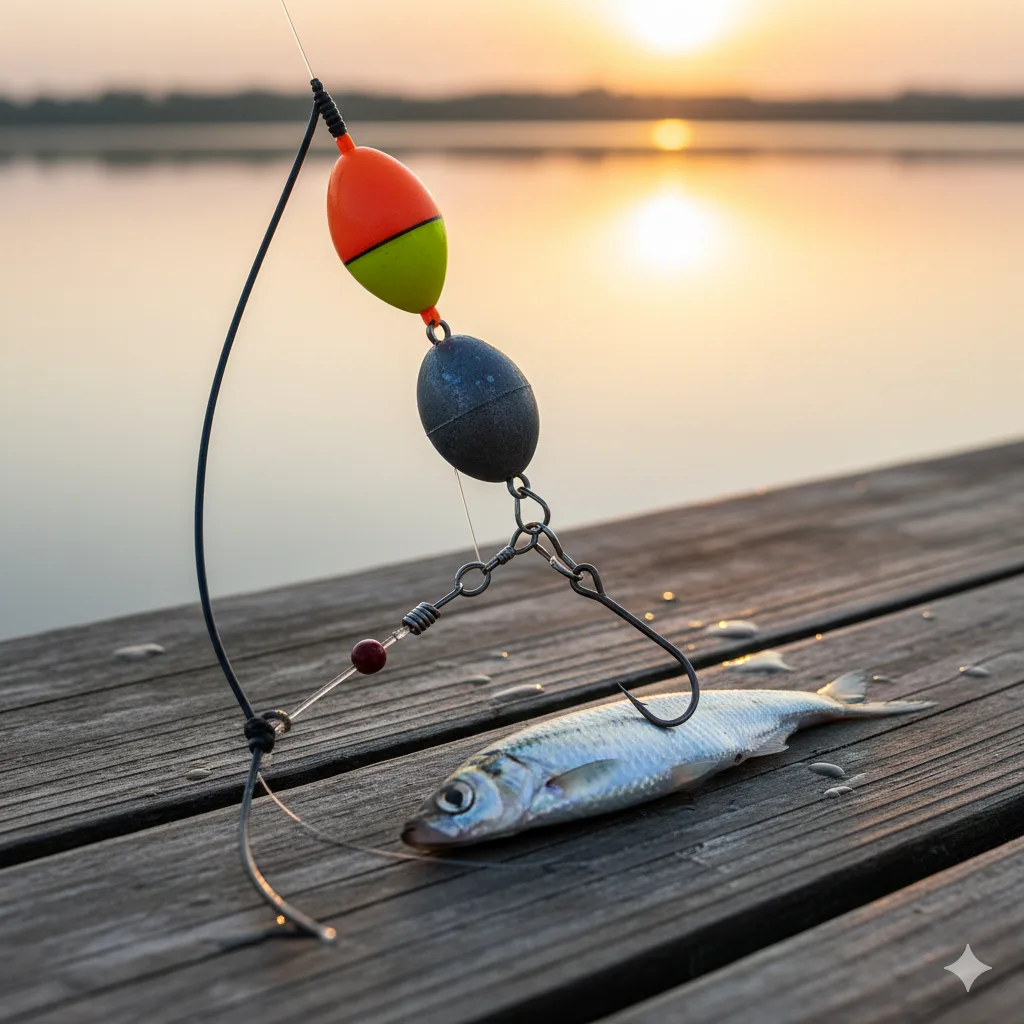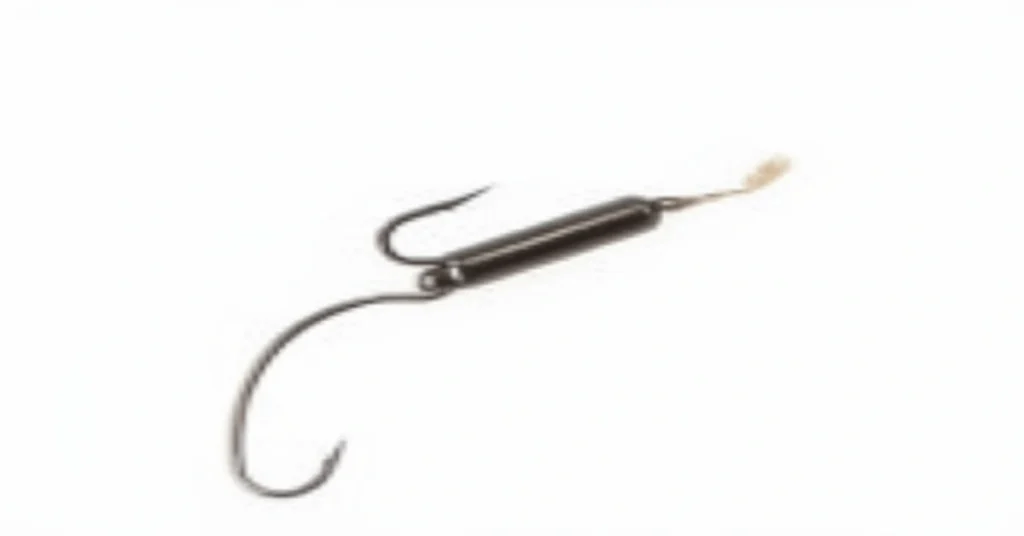Master Live Bait Fishing Species: A Complete Guide
Ever felt the frustration of a fishless day, knowing the giants are lurking just below the surface? The secret to turning that frustration into a triumphant catch often lies not in the lure you buy, but in the life you choose to put on your hook. This guide is your definitive resource for understanding and mastering the art of selecting the perfect live bait fishing species. We solve the problem of mismatched bait by teaching you how to think like a predator, ensuring what you offer is exactly what they crave. You’ll learn how to identify, select, and present the right bait for any situation.
Moving beyond generic advice, we will dive deep into the specific strategies that transform an average angler into a consistent producer. This isn’t just about hooking a worm; it’s a science and an art form. We will explore everything from the subtle nuances of bait presentation to the advanced tactics needed for targeting trophy-class fish. By understanding the ecosystem and the preferred diet of your quarry, you will unlock a more intuitive and successful approach to live bait freshwater fishing.
Table of Contents
- What is live bait fishing species?
- Key Benefits and Importance
- Complete Step-by-Step Guide
- Expert Tips & Best Practices
- Common Mistakes to Avoid
- Advanced Strategies for 2024/2025
- Essential Tools & Resources
- Frequently Asked Questions
What is live bait fishing species?
The term live bait fishing species refers to the specific types of living organisms—such as minnows, worms, leeches, or insects—that are chosen and used by anglers to attract and catch a particular target species of fish. It’s the strategic practice of matching the natural food source of a game fish with the bait on your line. This concept is the cornerstone of successful live bait fishing.
This principle extends across all forms of angling, from a simple panfish rig to complex setups for apex predators. For example, successful live bait bass fishing often involves using shiners or crayfish, while effective live bait trout fishing might rely on wax worms or nightcrawlers. Similarly, the key to productive live bait walleye fishing frequently involves leeches or fathead minnows, whereas trophy hunters engaged in live bait pike fishing might use large suckers or chubs. The success of your outing depends heavily on proper live bait species selection, which requires understanding your live bait target species. This approach provides incredible live bait fishing variety and is essential for any angler looking to master live bait freshwater fishing or target specific live bait game fish, making it a vital skill for live bait multi species trips.
Key Components
- Forage Base Understanding: This is the foundation. It involves identifying what your target fish naturally eat in their environment, a concept often called “matching the hatch.”
- Bait Selection & Viability: Choosing the right bait species is only half the battle. The bait must be healthy, lively, and presented naturally to trigger a predatory strike.
- Rigging and Presentation: This component covers how the bait is hooked and presented in the water. The goal is to allow the bait to move naturally without hindrance while ensuring a solid hookset.
- Environmental Adaptation: The best live bait fishing species can change based on water temperature, clarity, and time of year. Adapting your choice to these conditions is critical.
Why live bait fishing species Matters: Key Benefits
Understanding and correctly applying the principles of selecting the right live bait fishing species can elevate your catch rate by over 50%, according to many seasoned anglers. Artificial lures have their place, but nothing replicates the scent, movement, and vulnerability of a living creature. This authenticity triggers a primal, instinctual response in predatory fish that artificials can’t always match, especially with wary or pressured fish.
Unmatched Realism and Action
Live bait provides a combination of scent, motion, and texture that is impossible to replicate perfectly. A struggling minnow sends out vibrations and chemical signals that travel through the water, alerting nearby predators. This natural distress signal is a dinner bell for a huge live bait game fish. For instance, in live bait bass fishing, the erratic flutter of a hooked shiner is often more effective than any crankbait at provoking a strike from a cautious largemouth.
Increased Hook-Up and Landing Ratios
Predatory fish tend to hold onto live bait longer than artificial lures. When a bass or walleye strikes a live minnow, it feels and tastes real, causing them to commit to swallowing it. This gives the angler more time to set the hook properly, leading to more successful hooksets and fewer lost fish. This is particularly important in live bait walleye fishing, known for its notoriously light bites. Proper live bait species selection leads to more confident takes.
“The single biggest mistake anglers make is underestimating the intelligence of their target. Using the correct live bait fishing species isn’t just an option; it’s a conversation with the fish in a language it understands.”
Complete Guide to live bait fishing species – Step-by-Step
Systematically choosing the right bait is a process that separates novice anglers from experts. This three-step guide breaks down the methodology into a simple, repeatable process for any body of water and any target. Following these steps will dramatically improve your live bait species selection skills.
Step 1: Identify Your Primary Target Species
The entire process begins with a simple question: what do you want to catch? Different fish have vastly different dietary preferences. Your approach to live bait trout fishing will be completely different from your strategy for live bait pike fishing. Research is key.
- Specific action item: Use your state’s Department of Natural Resources (DNR) website to see which game fish are prevalent in your target lake or river.
- Required tools or resources: DNR website, local fishing reports, and angling forums.
- Expected outcome: A clear understanding of the live bait target species available and their primary feeding habits. This dictates your entire bait strategy.
Step 2: Match the Local Forage
Once you know your target, you must determine what it eats in that specific environment. A bass in a shallow, weedy pond might feed on bluegills and frogs, while a bass in a deep, clear reservoir might key in on suspended shad. This is the essence of effective live bait fishing species selection.
Observe the water’s edge for fleeing baitfish, look for insect hatches, or even check the stomach contents of a legally kept fish to see what it has been eating. The goal is to present something familiar and desirable. This knowledge adds incredible live bait fishing variety to your arsenal.
Step 3: Source, Handle, and Maintain Your Bait
Your chosen bait is useless if it’s dead or dying on the hook. Sourcing high-quality bait and keeping it healthy is a non-negotiable step. You can either purchase bait from a reputable local bait shop or catch your own using cast nets or traps.
Proper maintenance involves using an aerated bait bucket, keeping the water cool and clean, and handling the bait as little as possible. Healthy bait is active bait, and active bait is what triggers strikes from your preferred live bait game fish. This step is crucial for all live bait freshwater fishing.
Expert Tips & Best Practices for live bait fishing species
Following best practices ensures your efforts in selecting the right live bait fishing species translate into more fish in the boat. These tips are divided into foundational advice for beginners and advanced tactics for seasoned anglers looking for an edge.
For Beginners:
- Start Universal: Begin with baits that appeal to a wide variety of fish, like nightcrawlers or medium-sized fathead minnows. This is a great way to learn rigging and presentation while still having a high chance of success for a live bait multi species day.
- Focus on Bait Health: A lively bait is a thousand times more effective than a listless one. Always use a quality aerator and change the water frequently, especially on hot days. This simple step is critical.
- Learn One Rig at a Time: Master a simple slip-bobber rig or a bottom-bouncing rig before moving on to more complex presentations. Consistency in rigging leads to confidence and better results.
For Advanced Users:
- Seasonal Bait Matching: Go beyond basic forage matching by adapting your bait to seasonal patterns. For example, use smaller baits in early spring when young-of-the-year forage is abundant, and switch to larger baits in the fall as predators bulk up for winter. This is a key part of advanced live bait species selection.
- “Downsizing” for Pressured Fish: In heavily fished waters, trophy fish become wary of standard-sized baits. Try using a smaller, more subtle bait than what is typical. A smaller, livelier offering can seem like an easier, less threatening meal to a cautious live bait game fish.
5 Common live bait fishing species Mistakes to Avoid
Even with the right bait, simple mistakes can lead to a frustrating day. Avoiding these common errors is just as important as your initial live bait fishing species selection. Success lies in the details, from the hook to the water.
Mistake #1: Using the Wrong Bait Size
The Problem: Many anglers believe “bigger bait means bigger fish.” While sometimes true, using bait that is too large can intimidate or be impractical for your target species. Conversely, bait that’s too small might only attract nuisance fish.
The Solution: Adhere to the principle of matching the hatch. Observe the size of the natural forage. For precise live bait walleye fishing, a 3-4 inch minnow is often better than a 6-inch chub, as it matches the size of the perch or shiners they are actively feeding on.
Mistake #2: Neglecting Bait Health and Liveliness
The Problem: Crowding too many minnows in a small bucket, using warm or chlorinated water, or handling bait excessively leads to stress, injury, and death. A dead or lethargic bait has almost zero appeal compared to a lively one.
The Solution: Invest in a high-quality, aerated bait container. Use water from the lake or river you are fishing, and handle bait with wet hands to protect their slime coat. This ensures your chosen live bait fishing species remains an irresistible target.
Mistake #3: Improper Rigging and Hooking
The Problem: Hooking a minnow through the spine can kill it instantly. Using a hook that is too large can impede its natural swimming motion. Both mistakes sabotage your presentation.
The Solution: Learn the proper hooking techniques for different baits. For minnows, hook them lightly through the lips or just behind the dorsal fin to allow for maximum movement and longevity. This is vital for effective live bait bass fishing and live bait pike fishing.
Advanced live bait fishing species Strategies for 2024/2025
As fishing pressure increases, game fish become more educated. Staying ahead requires innovative thinking. These advanced strategies for selecting and presenting live bait fishing species are designed for the modern angler looking to outsmart the smartest fish in the system for 2024 and beyond.
Trophic Level Baiting
This strategy involves using bait that is one level down the food chain from your target’s primary forage. For example, if you know the big walleyes in a lake are feeding heavily on 2-inch yellow perch, instead of using a perch, try using the type of tiny invertebrate or micro-minnow that those perch feed on. The theory is that presenting a bait that attracts the target’s food source will, in turn, bring the predator to you. It’s a subtle approach that can be deadly in clear water or on highly pressured lakes.
Scent Combination and Enhancement
This goes beyond simply using a live bait’s natural scent. It involves carefully adding another natural attractant to create a scent profile the fish have never encountered. For example, when engaged in live bait trout fishing with a nightcrawler, add a small piece of shrimp or a commercial, oil-based crawfish scent. This “scent stacking” can trigger a feeding response in neutral or inactive fish by overwhelming their senses with a combination of appealing smells, suggesting a uniquely rich feeding opportunity.
Essential Tools & Resources for live bait fishing species
Having the right gear and information is fundamental to executing your strategy. These tools and resources will help you find, maintain, and effectively fish with the ideal live bait fishing species for your next trip.
Recommended Tools:
- Aerated Bait Bucket/Cooler: This is the most critical piece of equipment. A quality aerator keeps oxygen levels high, ensuring your bait stays lively and active for hours, or even days. Frabill and Engel are trusted brands.
- Cast Net/Bait Trap: For anglers who prefer to catch their own bait, a cast net (for open water) or a minnow trap (for creeks and shorelines) is essential. This guarantees the freshest possible bait that is perfectly matched to the local ecosystem.
- De-Hooking Pliers: Live bait often gets swallowed deeper than artificials. A good pair of long-nosed pliers or a dedicated de-hooking tool is crucial for quickly and safely removing the hook, which is vital for practicing catch-and-release.
Additional Resources:
- State DNR Websites: These sites offer invaluable, up-to-date information on fish populations, stocking reports, and local regulations for your target body of water.
- Fishing Apps (Fishbrain, Anglr): These apps provide user-generated fishing reports, water temperature data, and maps. They can offer clues about which live bait target species are biting and what they are biting on.
Frequently Asked Questions About live bait fishing species
Q1: What are the best all-around live bait species for freshwater fishing targeting multiple game fish?
Answer: For a versatile, live bait multi species approach, it’s hard to beat nightcrawlers and medium-sized (3-4 inch) shiners or chubs. Nightcrawlers are effective for nearly every live bait game fish, from panfish to catfish, and are a staple in live bait trout fishing. Shiners appeal to almost all predatory fish, making them a top choice for live bait bass fishing, live bait walleye fishing, and even live bait pike fishing. The key to this live bait fishing variety is that both are common food sources across many ecosystems. Proper live bait species selection still depends on your specific live bait target species, but these two are fantastic starting points for any live bait freshwater fishing adventure.
Q2: How do I keep my live bait alive longer?
Answer: The three keys are cool temperature, high oxygen, and clean water. Use an insulated, aerated bait bucket. Keep the water cool by adding a frozen water bottle (not loose ice, which can contain chlorine). Avoid overcrowding the bucket and change the water every few hours with water from the lake or river you are fishing. Handle bait minimally and with wet hands.
Q3: What is the best way to hook a minnow for trolling versus casting?
Answer: For casting and still fishing (e.g., under a bobber), hooking the minnow lightly through the back, just behind the dorsal fin, allows for the most natural swimming action. For trolling or drifting, hooking the minnow up through both lips is the superior method. This keeps it streamlined in the water and prevents it from “spinning” unnaturally as you move.
Q4: I’m new to this. What is the easiest live bait to start with?
Answer: Worms (nightcrawlers, red worms) are by far the easiest and most forgiving live bait fishing species for beginners. They are readily available, easy to keep alive, simple to hook, and they catch a massive variety of fish. They are an excellent way to build confidence and learn the fundamentals of presentation before moving on to more delicate baits like minnows or leeches.
Conclusion: Master live bait fishing species for Long-term Success
Mastering the art of selecting the correct live bait fishing species is not just a technique; it is the most fundamental skill an angler can develop. It bridges the gap between simply hoping for a bite and strategically ensuring one. By understanding your target, matching the local forage, and presenting your bait perfectly, you transform yourself from a passive participant into an active predator.
The future of angling will reward those who embrace this detailed approach. As you continue to refine your live bait species selection, you’ll find greater success in every aspect of your fishing, from live bait bass fishing and live bait trout fishing to challenging pursuits like live bait walleye fishing and live bait pike fishing. Embrace the immense live bait fishing variety available, apply these principles to your live bait freshwater fishing, and you will consistently catch more and bigger live bait game fish for years to come.
Related Articles You Might Find Helpful:
- Advanced Rigging Techniques for Multi-Species Live Bait Success
- The Ultimate Guide to Seasonal Live Bait Bass Fishing
- Catching Your Own Bait: A How-To Guide for Anglers
What’s Your live bait fishing species Experience?
What is your go-to live bait for your favorite target species, and do you have a unique tip for keeping it healthy on the water? Share your success stories and strategies in the comments below!
Note: This guide reflects current best practices and is updated regularly to ensure accuracy. Last updated: October 17, 2023



